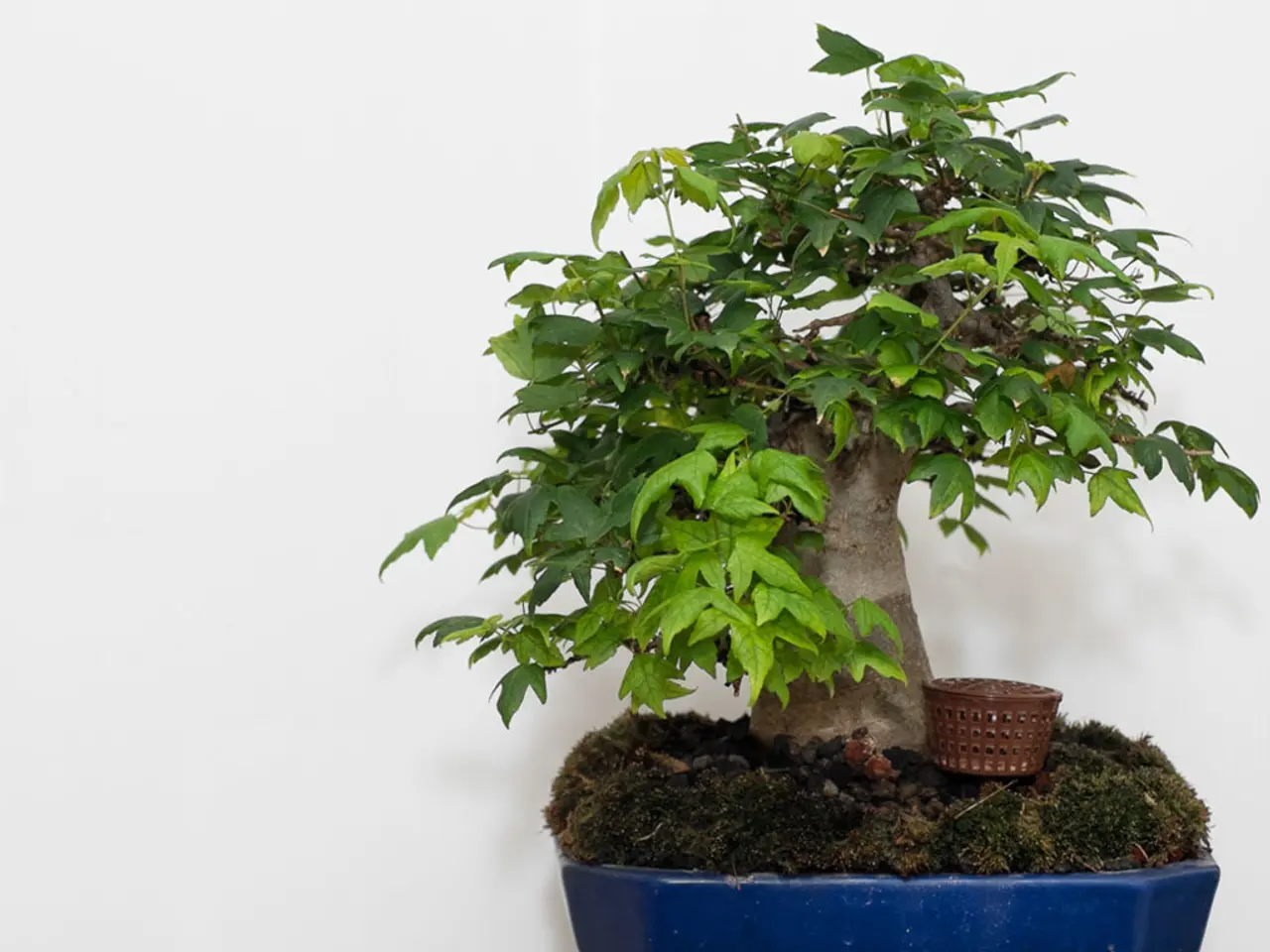Guide for Bonsai Novices: Comprehensive, Sequential Instructions
In the world of bonsai, maintaining the condition of your tools is just as important as nurturing your plants. Here's a step-by-step guide on how to clean, maintain, and store your bonsai tools effectively to ensure they remain sharp, functional, and rust-free for years to come.
Step 1: Clean Thoroughly
After each use, remove dirt, sap, and debris from your tools using a dry cloth. For tougher residues, wash with mild soap and water, but avoid soaking metal parts for extended periods. Use a wire brush or steel wool to gently remove any rust spots, and apply rust remover if necessary.
Step 2: Dry Completely
Ensuring your tools are completely dry is crucial. After cleaning, dry each tool thoroughly with a clean cloth or paper towel. Trapped moisture can lead to rust and corrosion.
Step 3: Lubricate Metal Parts
Apply a thin layer of light machine oil, such as sewing machine oil or 3-in-1 oil, or penetrating oils like WD-40 to hinges, joints, blades, and metal surfaces. This lubrication displaces moisture and prevents oxidation. Wipe off excess oil to avoid attracting dirt.
Step 4: Store Tools Properly
Store your tools in a dedicated tool roll or case, like a leather bonsai tool roll, which can accommodate multiple tools while protecting them from moisture and damage. Store these in a dry, well-ventilated area away from humidity.
Breathable storage containers should be used to prevent the buildup of condensation and moisture. Opt for a designated drawer, cabinet, wooden or bamboo toolbox, or fabric pouch with individual compartments. For an ideal environment, consider a dry cabinet meticulously maintained to regulate humidity levels.
Maintaining Your Tools
Regular maintenance is essential. Set aside a specific time each week to inspect and clean your tools to prevent sap and debris from accumulating. Identify and address common issues like dull blades, rusty tools, or jammed mechanisms to help restore them to ideal working condition.
Sharing bonsai tools with fellow enthusiasts is not recommended due to the risk of cross-contamination of plant diseases and pests. Avoid using household cleaners on bonsai tools, as they can damage the metal or contaminate the tools. Store bonsai tools in a cool, dry location to prevent rust and corrosion.
Special Considerations
Carbon steel tools are prone to rusting when exposed to excessive moisture. To prevent this, consider storing them in a toolbox or drawer lined with a rust-resistant material like felt or velvet.
Develop a personalized maintenance schedule that caters to the specific needs of each tool. While not all rust can be removed, regular cleaning and drying can prevent it from forming. Sharpen your bonsai scissors every 1-3 months or when you notice a decline in cutting performance.
By following these practices, you can minimise rust formation, keep your bonsai tools sharp and functional, and enjoy a rewarding bonsai experience for many years.
When not in use, store your bonsai tools in a dedicated tool roll, leather bag, or a moisture-resistant toolbox to preserve the tools' condition, promoting a longer lifespan. For those with a home-and-garden passion, a home-organized workshop or work desk decorated with garden accessories such as terrarium pots and bonsai tools can complement a lifestyle that appreciates both home and gardening.



